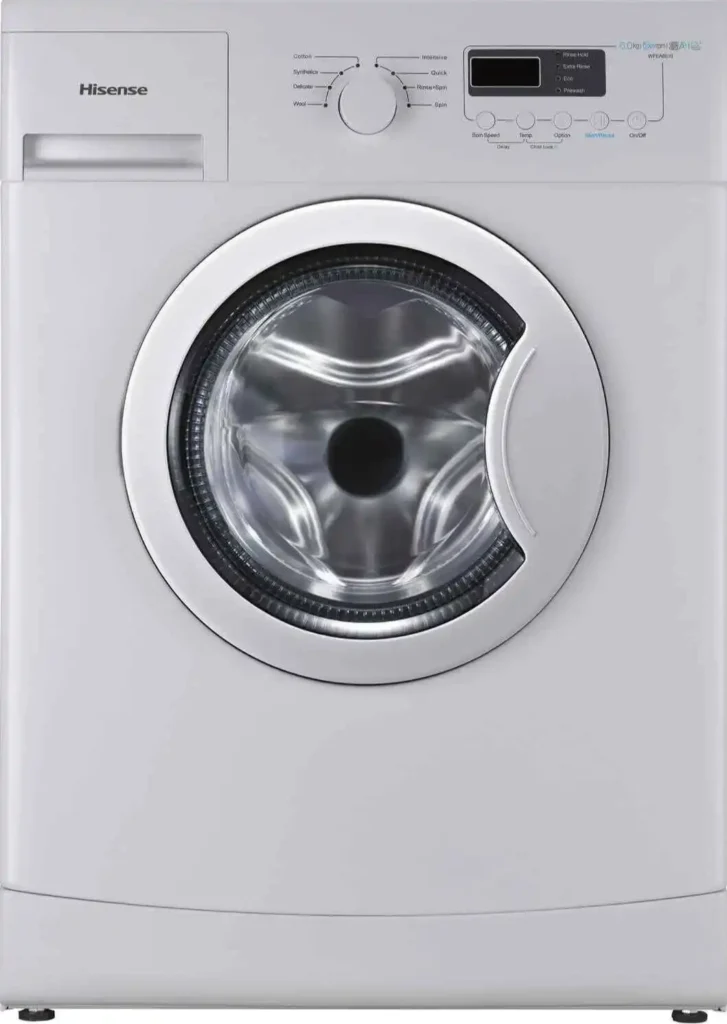Hisense Washing Machine: User Manual & Troubleshooting
Hisense Washing Machine delivers powerful washing performance with intelligent features tailored for everyday use. Engineered for fabric care and energy savings, it handles tough stains while preserving textile quality. Its compact design, multiple wash modes, and low-noise operation make it ideal for modern homes. Maintenance remains simple, ensuring consistent performance and extended lifespan. A smart choice for those valuing reliability and innovation in laundry solutions.
Manual
Hisense Washing Machine User Manual provides a structured guide to ensure efficient usage, from initial setup to advanced washing modes. Step-by-step instructions simplify installation, explain control panel functions, and detail wash cycle selection for various fabric types. Safety precautions, error code interpretations, and maintenance tips are clearly outlined to enhance longevity and performance.
Designed with clarity and convenience in mind, this manual serves as a dependable reference for seamless daily operation. Understanding each function boosts overall efficiency and reduces the risk of malfunction, making the washing experience more effective and hassle-free.
Hisense Washing Machine | Troubleshooting Guide
Understanding how to troubleshoot common issues in this brand of Washing Machine ensures smoother operation, reduced downtime, and extended appliance life. Faults can occur due to minor oversights or safety issues, and addressing them quickly prevents more severe malfunctions. This guide covers the most frequent problems users may face and offers professional solutions step-by-step.
Common Startup Issues and Their Solutions
Machine Not Starting and Screen Not Displaying:
If the Washing Machine does not start and the display remains inactive, begin by confirming the power supply. Ensure the plug is securely inserted into a functioning wall socket. In cases where the socket may be in doubt, test it using another electrical device.
Once power is verified, the correct washing program should be selected before starting the cycle.
Flashing Screen Without Operation:
A flashing screen usually indicates a safety interlock or an incomplete setup. Make sure the door is fully closed, as child safety locks may prevent activation. Also, confirm that the Start/Pause button has been pressed after turning on the tap. Water supply should be available and flowing before the machine can begin the cycle.
Mid-Cycle Interruptions and Mechanical Stops
Cycle Stops During Washing Program:
Mid-cycle stops are often caused by activated safety features. When the “Rinse Hold” indicator lights up, it must be deactivated by pressing the Start/Pause button or by initiating the Drain program.
The appliance is designed to halt mid-cycle if the door is opened, pausing operation to prevent water spills or component damage Once securely closed, the cycle can continue by pressing the control button.
In cases where excess foam is detected, the system engages a temporary pause, allowing internal sensors to stabilize conditions and resume the process without risking hardware performance.
Detergent Residue After Wash Completion:
When detergent or softener remains unflushed in the dispenser after a cycle, it often indicates a misaligned internal component. Ensure the separator and softener grid are correctly positioned and free from residue buildup, as even minor blockages can interfere with proper flow during rinsing. Any blockage or misplacement can lead to ineffective detergent flow and cleaning performance.
Hisense Laundry Appliance Performance Issues
Even when powered and running, a Hisense Washing Machine may produce suboptimal results due to environmental or usage conditions.
Vibrations During Spin Cycle:
If the machine vibrates unusually, placement on an uneven surface is often responsible. All four feet must be in firm contact with the floor. Additionally, if transport bolts remain attached (common after delivery), they must be removed to allow the drum to rotate freely.
Final Spin Not Drying Clothes Properly:
Inadequate spin results may stem from an imbalance in the load, particularly when heavy garments like bathrobes are involved. The system reduces or skips the spin phase to prevent internal damage.
Source: Lurgs How To Guides / Youtube
Solutions include redistributing the load, using the correct amount of detergent to avoid excessive foam, and confirming that the spin speed selector is not set to zero.
Display Time Changes Unexpectedly:
Fluctuating time on the machine’s display does not always indicate a fault. The washing machine recalculates the remaining time based on foam levels, laundry weight, and water temperature. Intelligent sensors adjust the duration dynamically, ensuring optimal cleaning performance. An animation on the screen may appear during recalculations.
General:

Brand | |
Model | Front-Load |
Product | Washing Machine |
Language | English |
FileType | User Manual PDF |
File Size | 1.00MB – (Pages – 11) |
